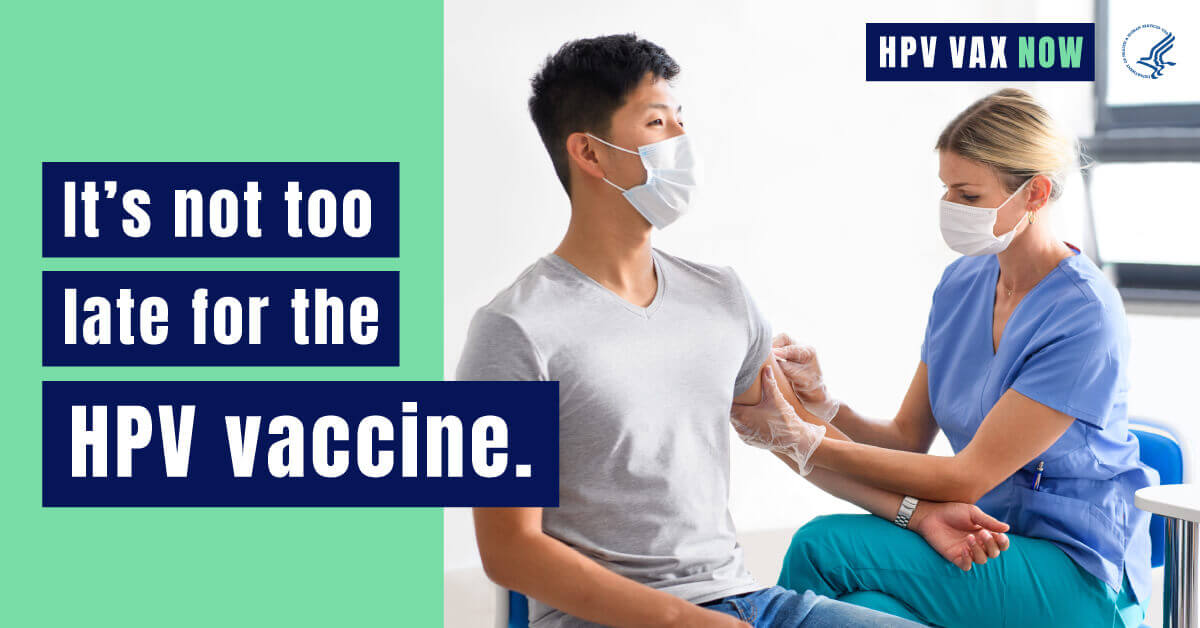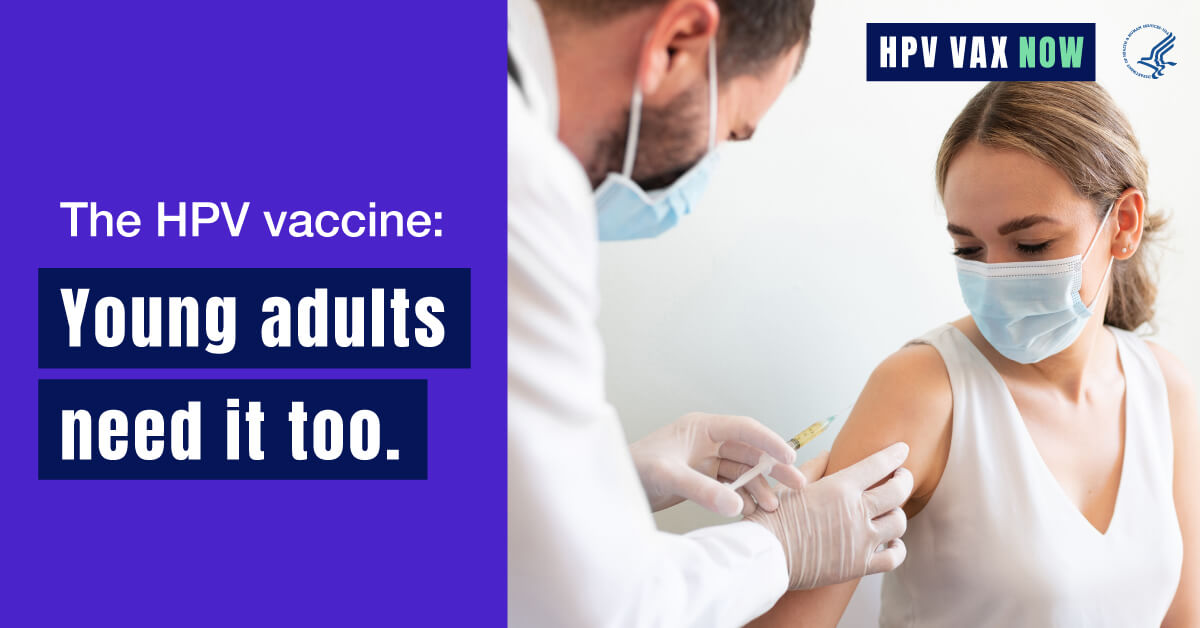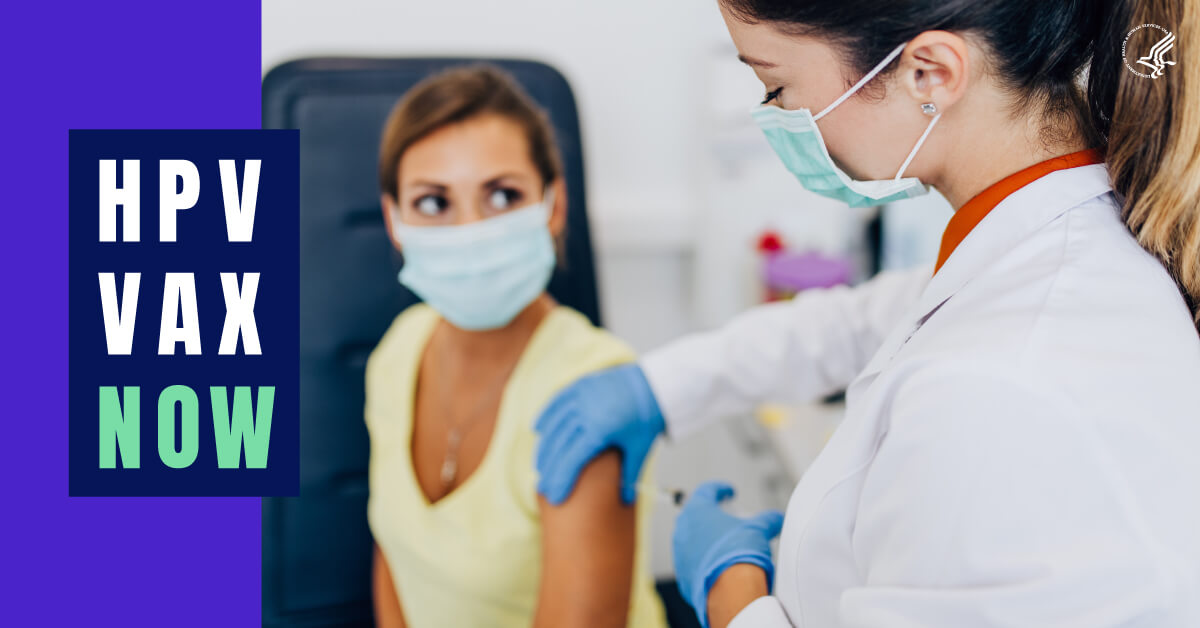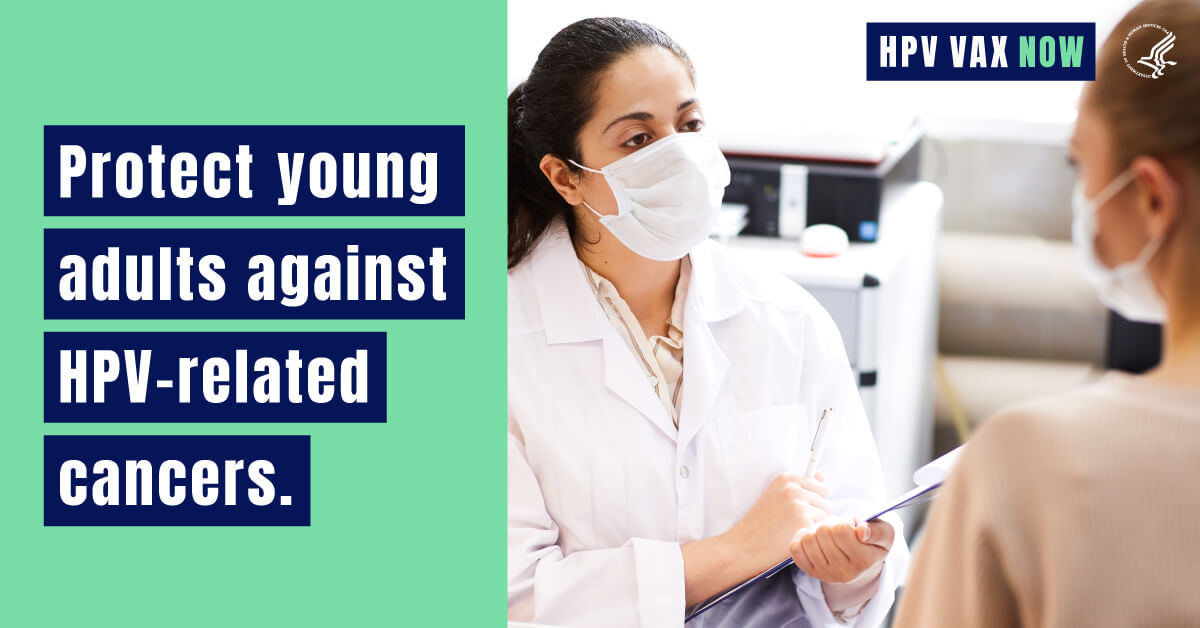The HPV vaccine is routinely recommended at ages 11 and 12, but young adults through age 26 who have not been vaccinated still need to get the vaccine to protect against HPV-related cancers.
Healthcare providers play an important role in getting young adults vaccinated. Share the messages and graphics below to help healthcare providers improve HPV vaccination rates among their young adult patients.
HPV vaccine resources for clinical practices
Everyone in a healthcare practice ? from office administrators to clinicians ? can help young adult patients get the HPV vaccine. Find tools and resources to share with clinical practices in the HPV Vaccine Clinic Package.
Social Media Graphics
Under each image you can download the graphics and sample messages for Instagram, Facebook, and Twitter.

Young adults can still benefit from HPV vaccination. Recommend the HPV vaccine to patients through age 26 every time they visit. For tips about discussing the vaccine with patients, visit http://go.usa.gov/x72Wf. #HPVvaxNOW
Young adults can still benefit from HPV vaccination. Recommend the #HPV vaccine to patients through age 26 every time they visit. For tips about discussing the #vaccine with patients, visit https://go.usa.gov/x72Wv. #HPVvaxNOW
HCPs: Recommend the HPV vaccine to patients through age 26 every time they visit. For tips about discussing the vaccine, visit vaccines.gov/HPVvaxNOW.
#HPVvaxNOW
#HPV
#HPVawareness
#gardasil
#cancerprevention
#cancer
#prevention
#vaccine
#cervicalcancer

Providers: Every visit is an opportunity to discuss the HPV vaccine with patients ages 18 to 26. Get tips on how to talk about the HPV vaccine and find more resources at https://go.usa.gov/x72Wf. #HPVvaxNOW
Providers: Every visit is an opportunity to discuss the #HPV #vaccine with #patients ages 18 to 26. Get tips on how to talk about the HPV vaccine and find more resources at https://go.usa.gov/x72Wv. #HPVvaxNOW
Providers: Every visit is an opportunity to discuss the HPV vaccine with patients ages 18 to 26. Get tips on how to talk about it at vaccines.gov/HPVvaxNOW.
#HPVvaxNOW
#HPV
#HPVawareness
#gardasil
#cancerprevention
#cancer
#prevention
#vaccine

HCPs: The HPV vaccine is recommended for all men and women through age 26. So, make sure you discuss it with your young adult patients. At every appointment. Learn what to discuss and why at https://go.usa.gov/x72Wf. #HPVvaxNOW
HCPs: The #HPVvaccine is recommended for all men and women through age 26. Learn what to discuss with your #patients and why at https://go.usa.gov/x72Wv. #HPVvaxNOW
HCPs: The HPV vaccine is recommended for all men and women through age 26. Learn what to discuss with your patients and why at vaccines.gov/HPVvaxNOW.
#HPVvaxNOW
#HPV
#HPVawareness
#gardasil
#cancerprevention
#cancer
#prevention
#vaccine
#cervicalcancer

Providers: Recommending the HPV vaccine is key. By doing so, you can help men and women ages 18 to 26 protect themselves from HPV-related cancers. Get tips for talking to young adults at https://go.usa.gov/x72Wf. #HPVvaxNOW
Providers: Recommending the #HPVvaccine is key. Get tips for talking to #patients ages 18 to 26 at https://go.usa.gov/x72Wv. #HPVvaxNOW
Providers: Recommending the HPV vaccine is key. Get tips for talking to patients ages 18 to 26 at vaccines.gov/HPVvaxNOW.
#HPVvaxNOW
#HPV
#HPVawareness
#gardasil
#cancerprevention
#cancer
#prevention
#vaccine
Sample Newsletter or Blog Content
Use the content below in your newsletters or on your blog to help healthcare providers find guidance for improving their HPV vaccination recommendations.
Sample Text 1
Headline: Protect Young Adults Against HPV-Related Cancers
Body Copy: Healthcare providers play a key role in making sure young adults are protected against HPV-related cancers. In fact, a strong recommendation for the HPV vaccine from a healthcare provider makes it 35 times more likely that a young adult will get the vaccine. Recommend the HPV vaccine to all of your male and female patients through age 26 at every clinical opportunity.
Find action steps, talking points, and tips for improving HPV vaccination rates at womenshealth.gov/HPVvaxNOW.
Sample Text 2
Headline: Improve HPV Vaccination Rates Among Young Adults
Body Copy: The HPV vaccine is the best way to protect young adults against 6 types of cancer. But only about 50% of young women and about 20% of young men have gotten the HPV vaccine.
Remember: Everyone in your practice plays an important role in getting young adults vaccinated against HPV. For action steps, talking points, and other strategies to improve HPV vaccination rates, visit womenshealth.gov/HPVvaxNOW.

